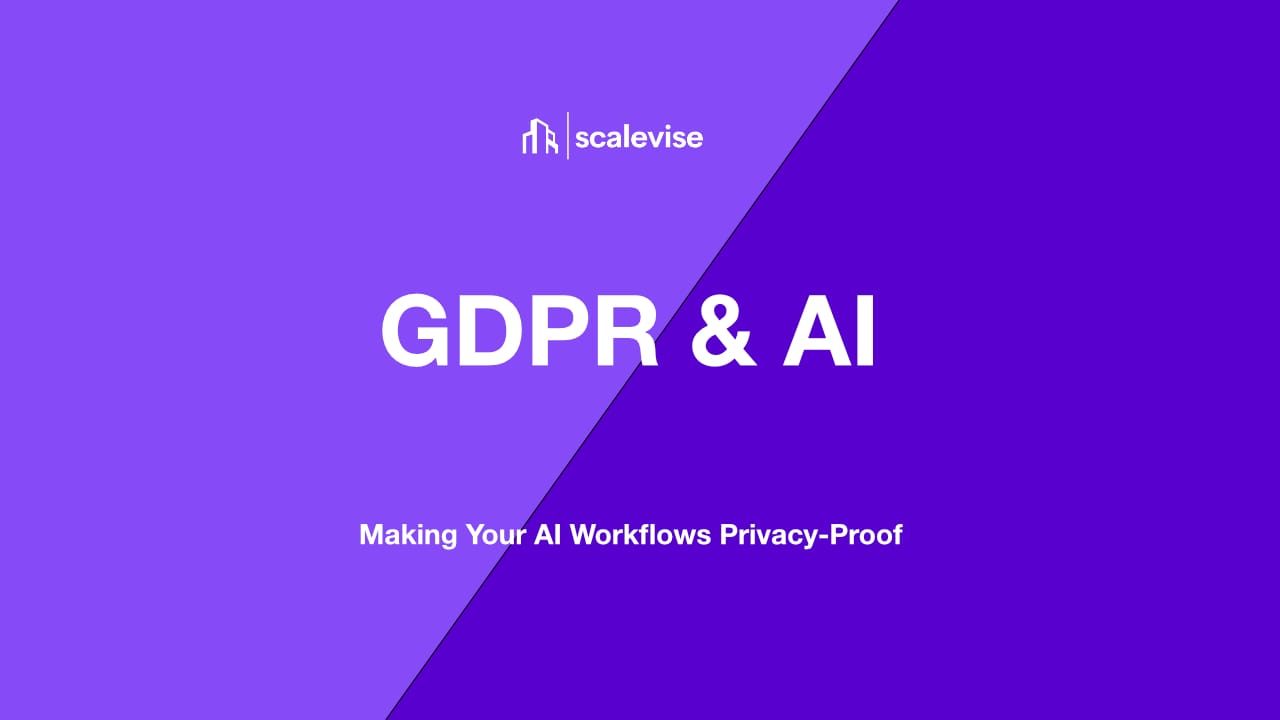GDPR and AI Middleware: Making Your AI Workflows Privacy-Proof

As AI systems become integral to modern business workflows, privacy compliance is no longer a post-launch checklist item it’s a non-negotiable part of system architecture. One of the most effective ways to enforce GDPR principles across AI workflows is by embedding compliance into your middleware layer.
If you're still mapping out your compliance strategy, start with this complete guide to AI and data privacy governance.
What Is AI Middleware?
AI middleware is the integration layer that connects AI systems (like agents, chatbots, or analytics engines) to other business tools such as CRMs, ERPs, or external APIs. Think of it as the "logic layer" that ensures data flows securely, accurately, and in context.
In many cases, middleware determines:
- What data is passed to the AI
- How results are processed or stored
- Which compliance rules are enforced along the way
For a closer look at how AI privacy frameworks evolve in Europe, see our write-up on Lumo: the privacy-first AI assistant Europe needs.
Why GDPR Compliance Starts in the Middleware
Most off-the-shelf tools like Make.com or n8n allow basic control over data routing, but they don’t enforce GDPR by default. That means sensitive data can easily be mishandled without your knowledge. With a custom middleware layer, you gain:
- Data Minimization: Pass only the data required for the AI task.
- Explicit Consent Triggers: Block actions unless consent is confirmed.
- Logging for DPIA: Automatically log which data is used and why.
- Conditional Workflows: Route different types of data through compliant processes.
Common GDPR Pitfalls in AI Workflows
Without a middleware enforcing compliance, AI systems may:
- Process data beyond its original purpose
- Store user inputs indefinitely
- Call third-party APIs in non-EU jurisdictions
- Lack opt-out or deletion logic
These gaps expose you to serious GDPR liabilities, especially with user-facing agents or integrations handling personal data.
If you're exploring tools to harden your AI stack, you may also want to read:
How to Align Your AI Stack with GDPR, Privacy & Security Standards
Real-World Example: Airtable to AI Agent
Let’s say you use Airtable to manage leads, and an AI agent qualifies them automatically. Here’s how a GDPR-proof middleware layer would help:
- Consent Gate: Before passing the lead to AI, check if GDPR consent is logged.
- Field Filtering: Strip sensitive fields (like notes or personal remarks).
- Routing Logic: Route leads from the EU through a separate, EU-hosted model.
- Logging: Record the exact fields and time of processing for DPIA.
This architecture not only complies with GDPR but creates full traceability a powerful shield in audits or disputes.
The Scalevise Advantage
Unlike generic workflow platforms, Scalevise builds custom middleware tailored to privacy-sensitive automation flows. Whether it’s sales automation, customer support, or HR onboarding, our solutions embed GDPR compliance into every interaction.
Middleware isn't just about data routing it’s the legal firewall that protects your AI.
Want to make your AI workflows GDPR-compliant from the ground up?
Get in touch with Scalevise
